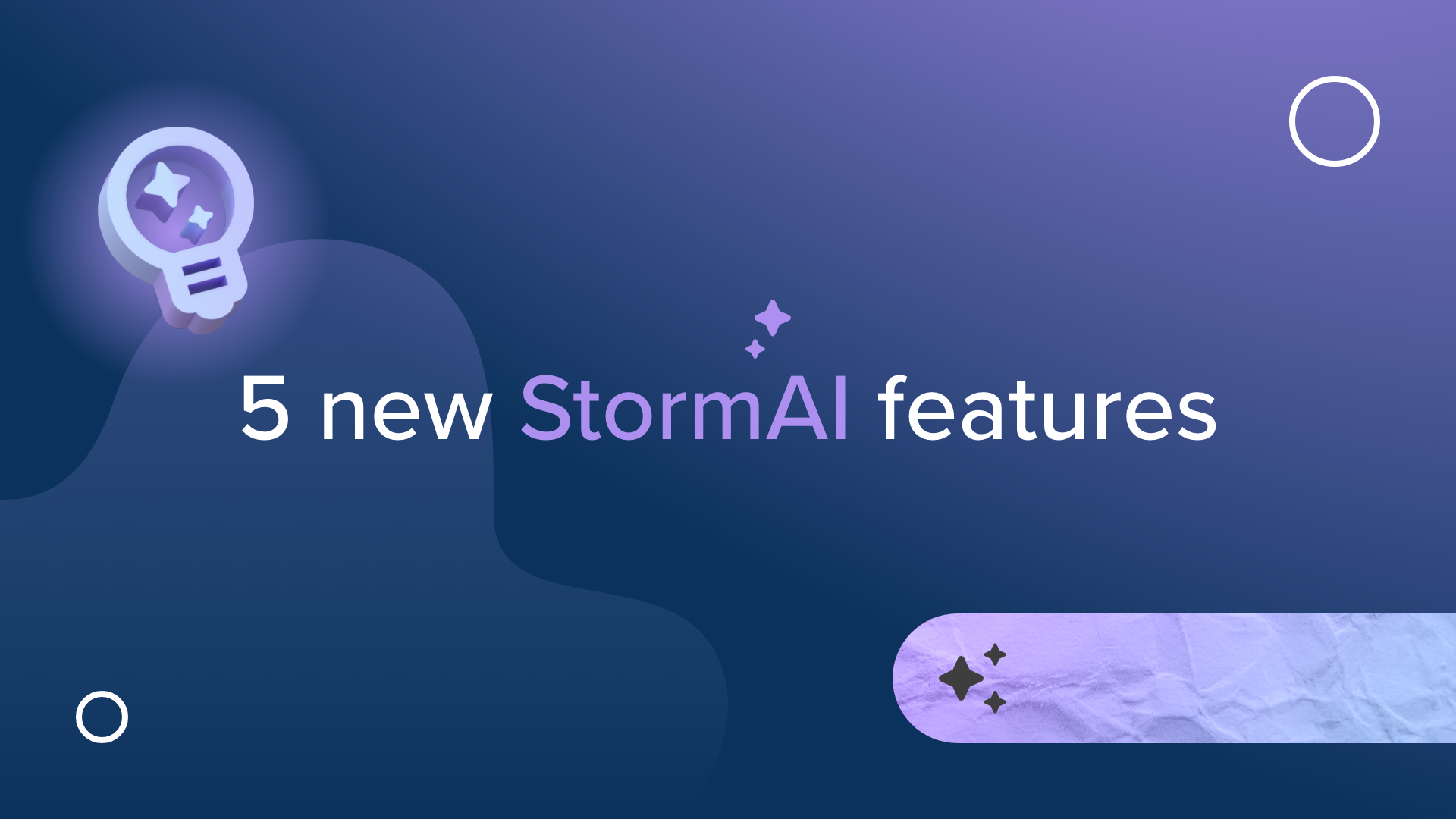The Project Canvas: Define Your Project With This Dynamic Template
Project management is a challenge — there are countless moving parts, and it is easy to get off track if you don’t have the goals and parameters of your project clearly defined.
Developed by Jim Kalbach, a UX strategist, in 2012, the Project Canvas was created to give everyone working on a project a view of not only the goals and individual elements of the project, but the relationships between them at-a-glance, so that the entire team can stay aligned in their work.
Who should use the Project Canvas?
The Project Canvas is for anyone who is working on a project together and is meant to be used throughout the project — not only at the beginning.
It should be used to stay on top of the project’s development, stay ahead of any potential conflicts or redundancies, and improve communication throughout the team.
Using Stormboard’s Project Canvas Template
Stormboard’s Project Canvas Template is divided into 10 sections: Users, Users Benefits, Goals, Participants, Activities, Deliverables, Risks, Milestones, Constraints, and Scope.
Like all of Stormboard’s templates, the individual sections can be resized as needed (without affecting the content that has already been added), and you can add sections to any of the sides of the template if you have an area that you want to cover that is not already built into the template. (Learn more about customizing Stormboard templates here).
Section 1: Users
Use this section to identify the main target groups relevant to your project. These can be defined at a high level, such as “readers” and “advertisers” for a media portal, or you may want to be more granular in detail — for instance, you can list personas you’ve developed.
Who will be interacting with your project?
In what ways do users organize themselves as groups?
What are some common characteristics, traits, or behaviors of these groups? How do these commonalities define these users?
You can include user persona profiles you have developed, or users can be listed as target groups or segments of larger groups. Include more specific qualities of your users, like distinguishing characteristics or qualities.
Section 2: User Benefits
List the concrete benefits that users will have when the project is successfully completed. Phrase these benefits as what the user will expect, not what you intend to deliver.
What will your users gain from this project?
How much of an impact on their experience with your product can your users expect from this project?
Will these benefits be temporary? Or will your users continue to benefit after the project is released?
Focus on benefits that are well-defined and relatively certain. Benefits may not affect all users in the same way — take time to outline what the benefit will be and use connector lines to link the benefits to their beneficiaries. Add more context to these benefits by stressing the impact they will have on your users.
Section 3: Goals
Goals are high-level statements that provide the overall context for what the project is trying to accomplish. Your project’s goals are different from the benefits listed previously, which are user-defined, and narrower in scope.
What are the goals of this project?
Why are they important?
In what way will achieving these goals change what you offer to your users?
For many design and UX projects, the project itself is actually part of a larger body of work. The goal of this project may be a part of a larger goal. Begin by listing project goals, then move on to more specific program or product goals. These are the goals of your team or company, which may or may not match the goals of your users.
Section 4: Participants
Your participants should include everyone involved in the development of your project. Include individual names when possible.
Who will have input on the development of this project?
Who will be contributing to this project?
What stakeholders does this project have?
Distinguish roles at a high level with three separate lists: core team, stakeholders, and interested parties. Try to be comprehensive, think of any and all stakeholders who will be involved with this project. Your users or customers are not participants — they have already been accounted for in another section of this template.
Section 5: Activities
The activities are the methods and approaches you’ll be employing on the project.
How do you plan to collect data for your project?
How will you use this data to develop your project?
Which methods have worked best in the past? Or have been the most productive?
Look to previous projects to find which methods were most productive. When possible, link directly to or add any inspiration material — for example, include a survey or concept map that the rest of your team can see, if not contribute to.
Section 6: Deliverables
List everything that will be delivered in this section. This doesn’t need to include internal working documents, like spreadsheets and concept maps. Instead, focus on final products like an executive summary or whitepaper.
What documents will need to be produced before the end of this project?
Who will be responsible for each document?
When will each need to be completed?
Include deliverables that stakeholders or other teams will see, as well as assets that customers may see. This section is for completed documents and items, not for assets that are in development.
Section 7: Risks
This is a list of future events that may have a negative impact on your project. These can be impacts on your final product, your release schedule, or further developments that you have planned.
What are the risks to your project’s development?
How can you mitigate these risks?
Are there any completed projects that had similar risks? What actions did the project team take to mitigate those risks? Were they successful?
Risks can be internal to your company, like development delays, or external like changes in the market.
Section 8: Milestones
List the key dates and events that frame the overall timeline of the project. This doesn’t need to be a detailed project plan, but it should be a clear outline of important dates ahead.
What are the important steps in your project’s development?
When do they occur?
How important is each milestone to the development of your project? Why is it important?
Include the date, time (if applicable), and a few details about each milestone and who the owners of that milestone are.
Section 9: Constraints
The focus of this section should be on the limitations placed on work processes. These are different from risks, as they are sure to impact the project’s development. For example, products can be subject to regulating bodies or benchmarks of performance.
What kind of increase in performance do you need for this project to be a success?
What are the governing bodies and their certifications that need to be included?
Do these certifications need to be renewed or developed? When? And how often?
Resources are a typical constraint, so only list exceptional resource constraints that are unique to your project. Include any technical specifications or certifications needed.
Section 10: Scope
Finally, define the scope of the project. Lay out the project’s parameters and list the features and functions needed. Also, list what is NOT in scope but may be assumed to be.
Why is this project needed?
Which stakeholders will be affected?
What assumptions have been made about this project?
If available, include a scope management plan based on input from the project plan, the project charter, and consultation with stakeholders. Find scope requirements by reviewing stakeholder input. Interviews, focus group discussions, surveys, and more will be used to understand requirements. As the project is executed, the scope must be controlled. Performance reports can be compared to project requirements to see where gaps exist. As this will apply to different people in different departments, try to keep your language accessible and jargon-free.
Conclusion
Your Project Canvas Template can serve as a great checklist of questions to ask, a guide to keep discussions and meetings focused, as reference material for future projects. However you plan to use your Project Canvas, remember to update it frequently in order to have access to the most relevant up-to-date data.












